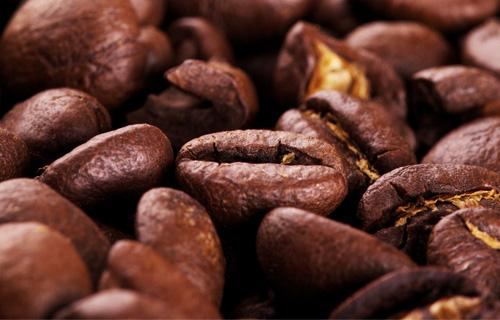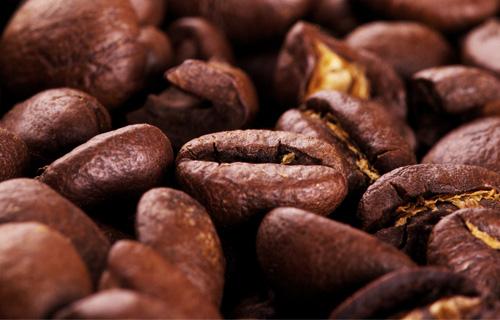Ecuadorian coffee bean flavor, Ecuadorian coffee bean introduction
Follow the caf é (Wechat official account vdailycom) and found that Beautiful Cafe opened a small shop of its own.
The Arabian Coffee Tree was first introduced to Ecuador (Ecuador) in 1952 and its coffee is of good quality, especially the coffee harvested in early June. Ecuadorian coffee beans can be divided into two varieties: Galapagos and Gigante, both of which have the characteristics of large granules and heavy weight. Ecuadorian coffee can be divided into first class (No.1) and super excellent (ExtraSuperior) according to its quality. They are mainly exported to the Nordic countries of Scandinavia.
The main problem facing coffee producers is their efforts to maintain stable quality. The coffee here is generally well-balanced and refreshing, with a unique aroma.

Ecuador is one of the few countries in South America that produces both Arabica coffee and Robbins coffee. However, as the land suitable for Arabica coffee trees is decreasing, the production of Robbins coffee is gradually increasing. The best Arabica coffee comes from the Andes, especially the Chanchagu Valley (ChanchamgoValley). The Andes are divided into two mountains, extending from south to north to central Ecuador.
Coffee, like the taste of life, is not so complicated, nor so sophisticated, just like, once, many people have been after the cup of coffee, Japanese bone porcelain, with Blue Mountain, very expensive, but the taste of Blue Mountain, how do you comment? Kopi Luwak, what's so good about it? Fancy coffee, the easiest way to use an old enamel steel cup from the 1960s, is the best nostalgia and practical. Of course, the production is the most important, the same cup of Cabo, 100 stores, there are 100 standards, you can remember the taste that makes you feel, the mood or personnel of that moment, is what you miss most.
Most Ecuadorian coffee grows on small farms. Compared with coffee growers in other countries, coffee growers here use few fertilizers and pesticides. In the past, the primitive and natural way of growing coffee limited the amount of coffee grown in Ecuador. But soon, unique buyers realized that this primitive and natural way of growing could be seen as a unique advantage.
With the prosperity of natural pollution-free coffee cultivation on farms, the sales of organic coffee are also growing. In order to implement this planting method, farmers need to invest a lot of time and resources to produce high-quality coffee beans. This obviously increases the price of coffee beans, but customers who advocate natural, healthy and high-quality products are still willing to pay for it.
Ecuador doesn't have much land to grow a lot of coffee, but it has an excellent climate, soil and professional growers who have grown coffee for centuries. They retain the traditional and delicate way of planting, which at the same time makes their life more colorful.
Once upon a time, for some families in Ecuador's southern provinces (such as Loha and El Oro), it was a tradition to have a cup of coffee at six in the afternoon. Today, although the pace of life has greatly accelerated, the aroma of coffee can still be smelled in the evening in Saluma and El Oro, because in the southern cities of Ecuador, coffee production is not just an activity seeking financial returns.
Because of its unique geographical and environmental factors, Ecuador is one of 14 countries in the world that can grow two kinds of coffee trees at the same time. Twenty of the 24 provinces in Ecuador grow coffee crops, each with its own unique characteristics, and coffee is named after the location where it is grown, such as Galapagos coffee, Panamanian straw hat coffee, Saluma coffee and so on.
Important Notice :
前街咖啡 FrontStreet Coffee has moved to new addredd:
FrontStreet Coffee Address: 315,Donghua East Road,GuangZhou
Tel:020 38364473
- Prev

Guatemala Antigua coffee introduction, Guatemala Antigua coffee flavor
Following Cafe (official Wechat account vdailycom) found that the Cafe Beautiful opened a small shop of its own, Antigua Valley, which is Guatemala's oldest and best-known coffee region. Volcanoes and extremely shallow groundwater levels form a dry microclimate, characterized by low humidity, adequate sunshine and cool nights. The Antigua producing area is closed.
- Next

Characteristics of Ugandan coffee, introduction of Ugandan coffee beans
Following Cafe Review (Wechat official account vdailycom) found that Ugandan Coffee beans, a small shop of its own, has a delicate flavor, which is very suitable for making Italian and other flavors. More importantly, Ugandan coffee beans are carefully screened according to the standards of the international market to ensure their high-quality, pollution-free characteristics. Africa is the two main varieties of coffee.
Related
- Detailed explanation of Jadeite planting Land in Panamanian Jadeite Manor introduction to the grading system of Jadeite competitive bidding, Red bid, Green bid and Rose Summer
- Story of Coffee planting in Brenka region of Costa Rica Stonehenge Manor anaerobic heavy honey treatment of flavor mouth
- What's on the barrel of Blue Mountain Coffee beans?
- Can American coffee also pull flowers? How to use hot American style to pull out a good-looking pattern?
- Can you make a cold extract with coffee beans? What is the right proportion for cold-extracted coffee formula?
- Indonesian PWN Gold Mandrine Coffee Origin Features Flavor How to Chong? Mandolin coffee is American.
- A brief introduction to the flavor characteristics of Brazilian yellow bourbon coffee beans
- What is the effect of different water quality on the flavor of cold-extracted coffee? What kind of water is best for brewing coffee?
- Why do you think of Rose Summer whenever you mention Panamanian coffee?
- Introduction to the characteristics of authentic blue mountain coffee bean producing areas? What is the CIB Coffee Authority in Jamaica?

